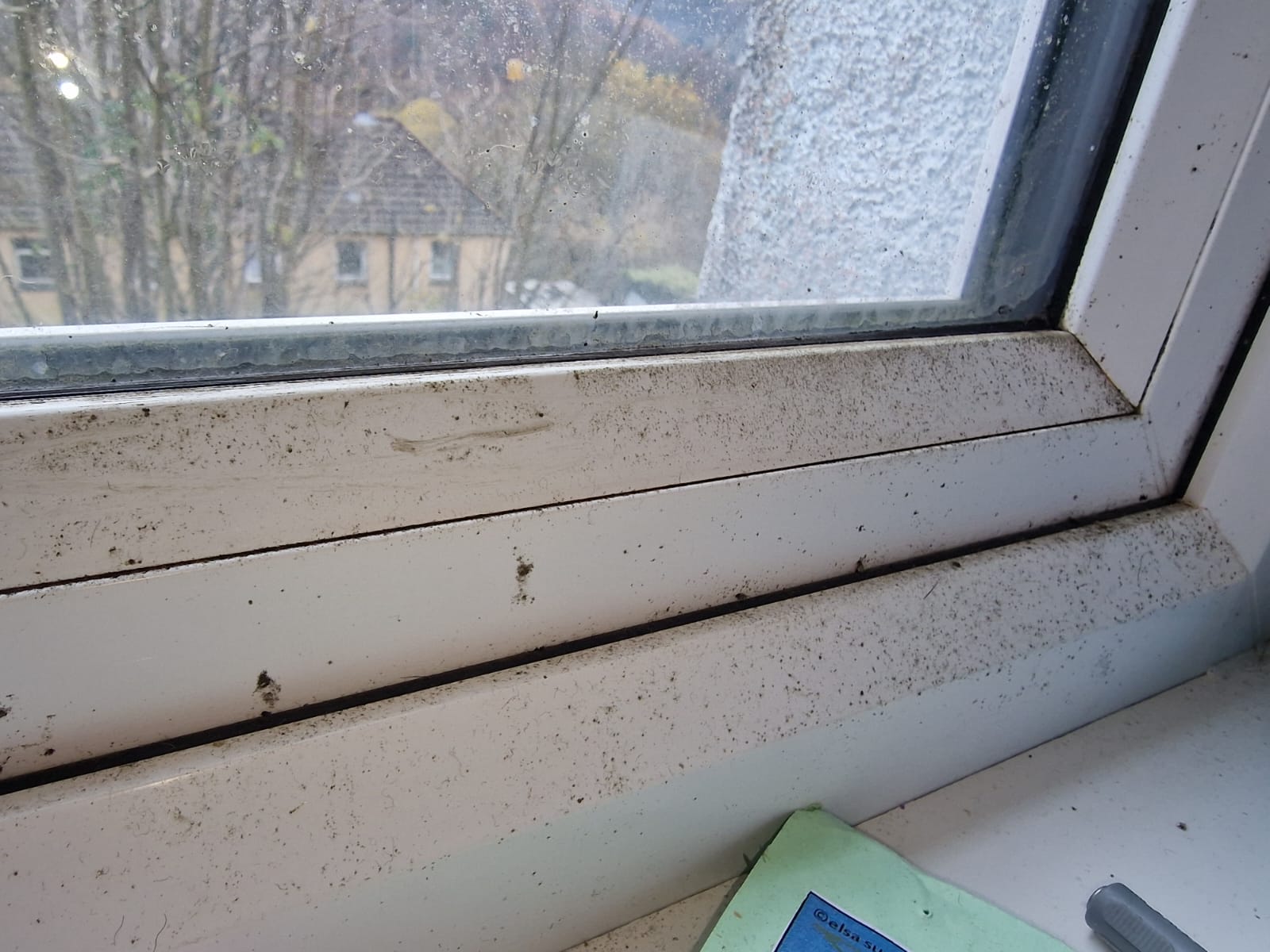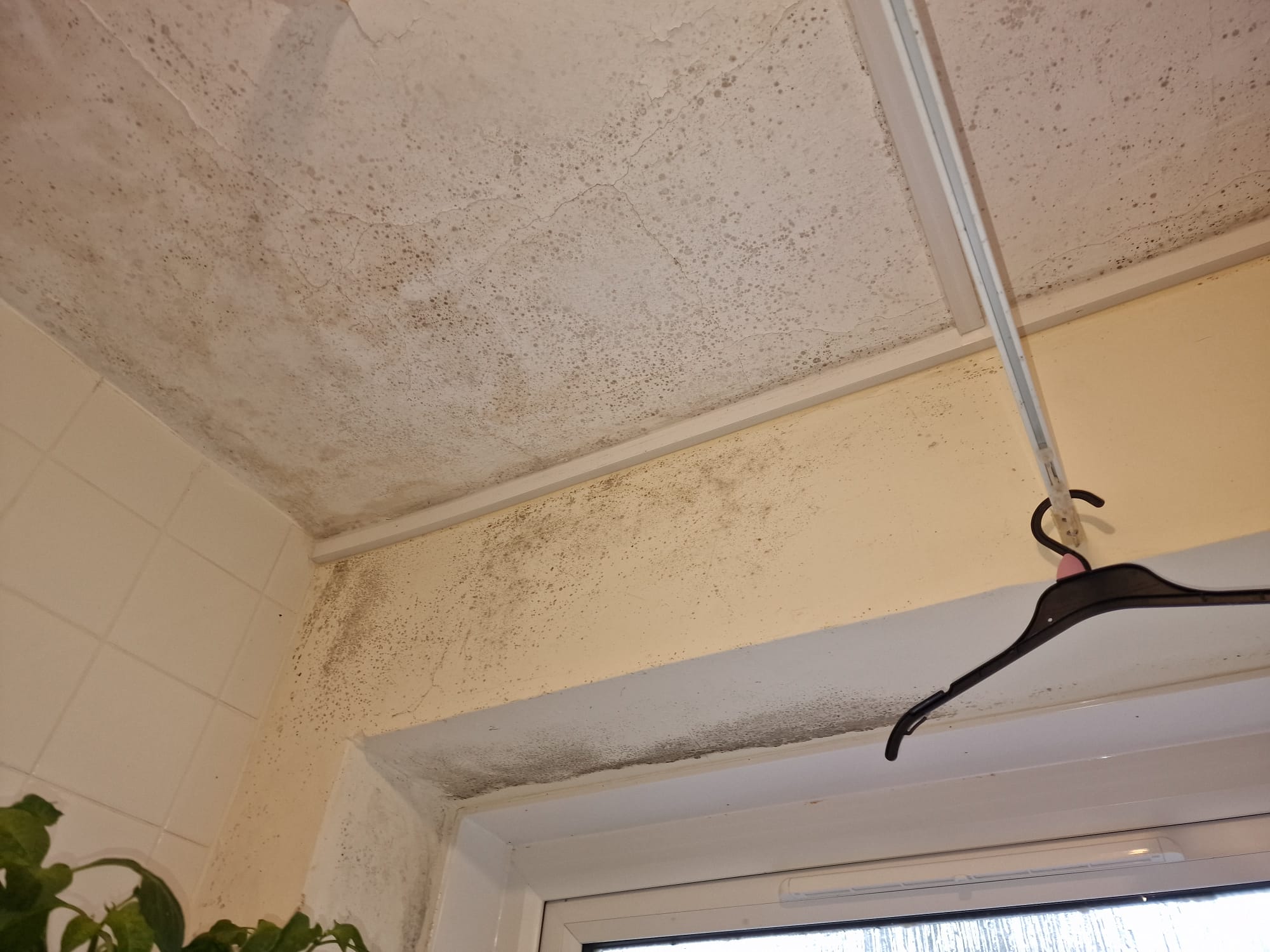Tackling damp, condensation and mould is a huge challenge for social landlords that will mean rethinking how we operate, says Duncan Forbes.
 The tragic death of two-year-old Awaab Ishak caused by mould growth in his home, like the Grenfell fire, was regrettably another ‘accident waiting to happen’ in the social housing world.
The tragic death of two-year-old Awaab Ishak caused by mould growth in his home, like the Grenfell fire, was regrettably another ‘accident waiting to happen’ in the social housing world.
There is absolutely nothing new in the finding that mould causes ill health. It has been known for decades. I began my housing career in the early 1980s as a tenants’ solicitor prosecuting local authorities and housing associations under the Public Health Act 1936 for providing homes which were ‘prejudicial to health’ because of condensation and mould growth.
We obtained court orders for the installation of new heating systems, improved insulation and mechanical ventilation. We provided medical evidence then from medical experts in respiratory conditions as to the damaging impact of mould on health, particularly of children (though when parents were smokers, the medical experts considered that tobacco smoke had a more damaging effect on a child’s health).
Tenants were treated to the familiar refrain ‘it’s not damp, it’s condensation’ together with comments that the problem was their ‘lifestyle’. Expert evidence was often able to demonstrate it was the design of their home which was the fundamental cause.
In 1993 I wrote a guide for the Housing Management Advisory Panel for Wales (HMAP) entitled ‘It’s not damp, it’s condensation! A guide to coping with condensation in the home’. That was as many as 30 years ago, and it’s depressing to see some of the same messages were provided to the housing sector by the HMAP back then as are now appearing as recent recommendations in the English ombudsman’s recent report. I am not convinced we have made much progress since the 1980s or 1990s.
At a time when many tenants are struggling both to heat and eat, and energy costs are still due to rise further, problems of condensation and mould are only likely to increase in the months ahead.

For social landlords, tackling damp, condensation and mould is a huge challenge which could be as big, if not bigger, than the challenge of fire safety. It may cost more to address and take far longer than fire safety. As an example, at Trivallis over the past 12 months we have had over 1,000 calls per year from our tenants raising concerns about damp and condensation. In Wales we have the new contractual obligations since December 2022 to ensure homes are fit for human habitation which includes freedom from damp and mould unless caused by the tenant. Whilst this doesn’t technically alter the legal obligations already owed it clarifies tenants’ rights and makes legal claims for compensation easier to pursue.
Here are some of the reasons why damp, condensation and mould are such a big challenge and some of the issues we need to address urgently.
The cultural challenges
Like fire safety, our biggest challenge is culture and focus. We have been failing at senior leadership (board and executive) level and at regulator level because we haven’t all given this enough attention; it’s not been on the right agendas and almost certainly not been anywhere significant on our risk registers. This is evidenced by the kneejerk reaction of the housing regulators who have never asked a question about mould before and by the fact that as landlords we are now scurrying around trying to establish the actual numbers of damp and mould cases which should have been at our fingertips.
Like fire safety, tackling issues of condensation requires an organisational wide approach as it involves assets, repairs, housing management and support teams (often with money advice thrown in). We successfully manage vast numbers of transactions involving individual teams such as repairs and housing management issues but when our response requires intensive cross-team working with the same issue and the same household, we too often struggle to provide an effective response.
We have a major problem with language. ‘Damp’ in property jargon means rising damp, penetrating damp or an internal leak ie a repairs problem. To a property surveyor, the word ‘damp’ usually doesn’t include condensation. But the natural meaning of the word ‘damp most definitely does include condensation. If tenants have condensation in their home they experience damp in the normal meaning of the word.
So our tenants and our staff are talking a different language. We need to be absolutely clear that condensation is a type of damp and never utter the phrase ‘it’s not damp, it’s condensation’ which I am afraid is still in current use.
Too many of us have a culture amongst some staff that is far too ready to blame tenants for condensation and too many of our staff lack an appreciation of just how hard/impossible it is to survive on very low incomes. We still have pockets of staff who think our tenants should just be ;grateful for what they have got’. This is unsurprising perhaps, when the culture promoted by the UK Government is that people are themselves to blame if they are on benefits or on low income.
All these beliefs are leading to the discussions we are still having with tenants about ‘lifestyle’. It’s a word which is pregnant with criticism for how a tenant is living their life, using their home and even caring for their children if their health is affected. It is a word that is absolutely guaranteed to get a tenant’s back up from the start and seriously damage their relationship with their landlord. Yet some of our staff are still using this very word here in 2023.

The systems challenge
Our property teams and their ICT systems count ‘widgets’. Our entire business plans and our repairs and assets systems are built on counting components; when will components need repairing or replacing and how much will each component cost to repair taking into account supplies and labour. Nowhere in these systems is their room for something as complex as tackling condensation which isn’t solved just by replacing one or several components. The solutions are usually far more complex. Most of our ICT systems simply aren’t up to this job.
Most ‘off the shelf’ housing software doesn’t actually have a proper method of recording damp and condensation effectively. I have led several organisations where the only way to find out the number of damp or condensation cases has been to run a search using key words in the narrative field hoping that the call centre has actually used those actual words to record the problem. Even some of our stock condition surveys commissioned for tens of thousands (often hundreds of thousands!) are based on counting components and don’t clearly identify issues of damp and mould. How crazy is that!?
Tackling a condensation and mould case requires good old-fashioned casework by multiple teams acting together responding to the tenant reactively but also working with the tenant and their household proactively. Many of us have ICT systems that have workflows for casework but I suspect few, if any, have such workflows for condensation and mould cases or workflows that exist across ICT systems for assets, repairs and housing management. So we have few standardised processes to ensure (and provide assurance for executives, board and regulators) that we follow through these cases in the right way.
The skills challenge
We lack enough knowledge and understanding of damp and mould in our organisations and far too few of our staff have the necessary expertise. What expertise there is often exists within a tiny group of surveyors within our assets or repairs teams. Even they have often been brought up to view ‘damp’ as a problem which is the landlord’s responsibility whilst condensation is the responsibility of the tenant. We need a far wider range of staff to understand more about condensation, its causes and how to avoid or reduce it. Tenant liaison officers, housing officers and support teams should be able to give basic advice.
The solution challenge
Diagnosing the cause of disrepair is much easier than diagnosing a condensation problem. ‘Diagnosis before first aid’ is the mantra; we mustn’t jump in with a quick fix but find out the true causes to be addressed.
Every home, every household, every change in use and every hour results in a different balance of temperature, moisture generation and ventilation which need to be in the right balance to avoid condensation.
Diagnosing the true cause of condensation in a particular home is going to require proper monitoring of temperatures and humidity over a period of use as well as staff expertise. It will often then require a combination of actions by both the landlord and tenant and further monitoring to check if the actions have been effective.
We will need to have more expertise ourselves to know about the ways in which humidity can be controlled through realistic and achievable changes in the use of the home and then be far better at supporting tenants and their households to make the right changes at the right times. If the wrong steps are taken then condensation can worsen and trust is damaged. We will need to give them the monitors to enable and help them to measure and regulate the humidity of their own homes together with good quality information and advice.
An ongoing good working relationship of trust with the tenant and their household and a partnership between landlord and tenant to identify and implement the right solution is going to be vital.

The challenge of scale and cost
Those landlords (mainly local authorities and stock transfer housing associations) with much of their stock built in the 1950s and 1960s will have literally scores of properties with problems of condensation and unfortunately many of these will experience some mould growth. As the UK Government promoted cavity wall insulation with generous grants, many of these landlords will also have had cavity wall insulation installed in west facing walls which are now leading to penetrating damp (the BRE advised against such installation long before it was done!).
The solution to condensation is often going to be expensive; new heating systems, external or internal insulation and mechanical ventilation. If there are significant cold spots in tenants’ homes, then insulation is going to be vital to resolve the problem and this can be one of the most expensive measures and highly disruptive if internal.
The combination of need and costly solutions tots up to a big financial headache for landlords to address these issues.
The learning challenge
Many ‘disrepair’ cases involve damp and mould. But, as the English Ombudsman points out, we don’t treat these as complaints when we should. That way, the learning from such cases should be identified and used to adapt our processes and responses.
The ventilation challenge
We have often installed mechanical ventilation systems into homes to remove moisture, for example from bathrooms and kitchens. Double glazed windows have so called ‘trickle vents’. But some of these systems don’t work effectively here in Wales because in even a moderate wind which we experience frequently, a cold damp draught can blow into the home instead of moist air escaping or being sucked out. The ventilation systems might actually be making problems of condensation worse and its no surprise that tenants feel they must close vents or block mechanical ventilation to keep their homes free from cold draughts. The real problem is flawed design.
The affordability challenge
It is vital that we are realistic about the steps that tenants can afford to take to reduce or prevent condensation in their homes.
The nature of our customer group means we should be providing homes that can be kept warm affordably by those on a very low income. If that is not possible, then it is our responsibility to improve the homes so they can be.
For example, increasing the temperature of homes with the right ventilation would significantly reduce condensation problems. ‘Turn up the heat and open the windows’ can be a solution on occasions. But it is wholly unrealistic at a time when many tenants are struggling to heat and eat and when energy costs continue to be on the rise. We need to ensure homes are affordable to heat.
Another example is that people used to hang their washing out on communal washing lines but now people are worried about it being stolen. So drying washing in the home is a new and necessary norm. For those without the money to buy ventilated tumble dryers there isn’t an alternative to hanging the clothes out somewhere inside the home to dry them if there isn’t a cheap launderette nearby. We need to be realistic that there is no alternative to drying clothes inside the home but able to give advice about what best to do to minimise the impact that the moisture generated will have on condensation.
The road ahead
There isn’t a quick fix and the problem of condensation and mould is unfortunately going to increase with the high cost of energy, more pressure on household resources and more poverty. It will also be more evident as landlords improve their systems for recording and identification and tenants report more cases because of the publicity around the health risks caused by mould. So it is highly likely that numbers will increase.
For initial steps, we hardly need look further than the recommendations of the English Ombudsman’s report. One key aspect missing, perhaps, is that the board and executive need to take responsibility and be held accountable for ensuring that the organisation as a whole is responding effectively.
In the medium term it is fortunate that the recent focus on retrofitting homes to make them zero carbon means that social landlords are already working on retrofitting programmes and building up the skills required. What we need to do is redefine and reprioritise this retrofit programme. It should be redefined as an affordable warmth programme first and zero carbon programme second and retrofitting should be prioritised to target the homes that are the hardest to heat and those with the greatest problems of condensation.
In the April 2022 issue of WHQ I wrote an article arguing that we needed to work much more closely with tenants on the retrofit programme and need to be clearer with tenants how they will benefit from retrofitting. If we work with tenants now over condensation problems, that partnership will extend into implementing programmes of improvement to help resolve the problems for the long term.
One cautionary note about retrofit though. If we adopt the proposed approach of ‘fabric first’ and focus on works that will seal homes better and therefore reduce air changes in people’s homes to make them warmer, we may inadvertently increase condensation. Ventilation will reduce. We should consider doing whole home retrofits in one hit that deliver a new improved balance of temperature and ventilation, rather than piecemeal programmes of improvement to particular components.
Duncan Forbes is a solicitor and chief executive of Trivallis